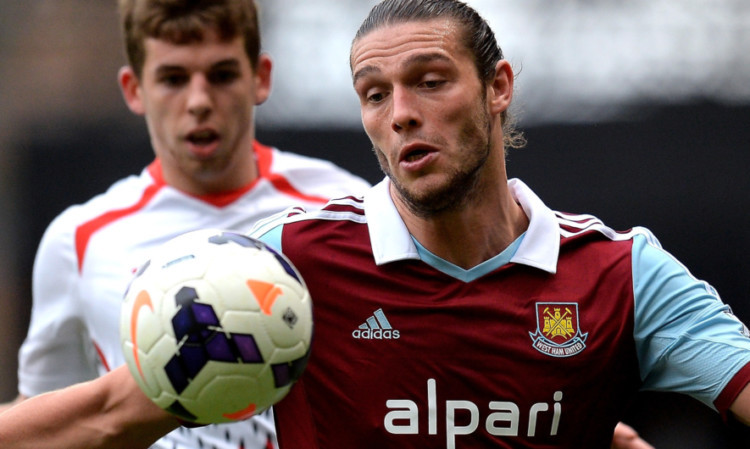There will be one selection of Roy Hodgson’s 23 which will tell us all we need to know about England’s hopes for the World Cup this summer.
Andy Carroll.
The late-season form of Carroll has spawned the predictable reaction that he has to go to Brazil to provide that mythical Plan B (punt the ball up the park in the general direction of a ponytail and hope that he causes a bit of chaos in the ranks of a cultured foreign defence that doesn’t like it up ‘em).
If Hodgson calls Carroll up, as I fully expect him to, England will be the only leading nation who will go to the competition with a fall-back strategy to hoof it long.
All the rest will have this novel idea that if Plan A isn’t going too well in a game, let’s try and execute it a bit better.
They will, of course, make the odd substitution but it will be like for like, Fabregas for Iniesta. Not battering ram for off the shoulder runner, Carroll for Sturridge.
Plan A, Plan A, and then Plan A again doesn’t mean a team automatically becomes predictable and easy to defend against, as advocates of a second way would have you believe.
It means you believe wholeheartedly in your philosophy, that you have a squad of players who buy into it, you have ingrained it until it becomes habitual, and you can still carry it off when the inevitable individual form dips come, and the pressure is at its most intense.
The problem with a Plan B is that it becomes a comfort blanket and makes it all too easy to revert to, when perseverance would have been more prudent.
Hodgson has been presented with a unique opportunity.
Actually, this is his second unique opportunity, if there is such a thing.
The first one was the Euro 2012 finals when he only got the job a few months before the finals and had the best get-out clause of any England manager ever (namely, what could I do at such short notice?)
Instead of looking on it as a free hit though, he made England even duller and predictable than usual, played for penalties, and lost.
This time, I can’t ever recall an easier to please English media and public in the build-up to a championship.
Expectations are at an all-time low, with the last 16 par, and anything else over-achievement.
Even if they went out at the group stages, Hodgson would have a chance of keeping his job, which would have been unheard of in years gone by.
There is a changed mindset in English football, and if the head coach can change with it, the possibilities for him and them in Brazil are great.
He is shackle-free and expectation-free like no modern day England manager before him.
If he chooses, Hodgson could put out a team, the majority of whom play their club football with two of the two most attractive teams in the Premier League Liverpool and Everton.
Eight out of 11 – Leighton Baines, Phil Jagielka, Glen Johnson, Steven Gerrard, Jordan Henderson, Daniel Sturridge, Raheem Sterling and Ross Barkley – could conceivably start.
What would make more sense play the old school Hodgson safety first way, or in the fashion that these players are accustomed to at their clubs, the Liverpool and Everton way with high tempo, possession-based, slick, on the ground football?
The squad will probably have a significant Southampton representation, where players are equally well schooled, so they would fit into the ethos. Wayne Rooney might not be Luis Suarez, but he’s certainly good enough to flourish in this culture as well.
That type of football doesn’t need an Andy Carroll introduced in panic with 20 minutes to go. It needs technique, athleticism, tactical bravery and patience.
The players mentioned above have proved this season they have the first two, and if Hodgson has the last two, the World Cup that looked like promising little could deliver a lot.
One name on, or not on, the final squad list for Brazil will tell us all we need to know.
Brendan Rodgers made the bold decision that, as effective as Carroll is in certain facets of the game, if those strengths didn’t fit in with the style of play that he wanted to implement, there was no point in including him in his plans. He could have scored six at Upton Park when Liverpool and West Ham met at the weekend and it wouldn’t have changed Rodgers’ belief.
Can Hodgson be as brave? I have my doubts.
